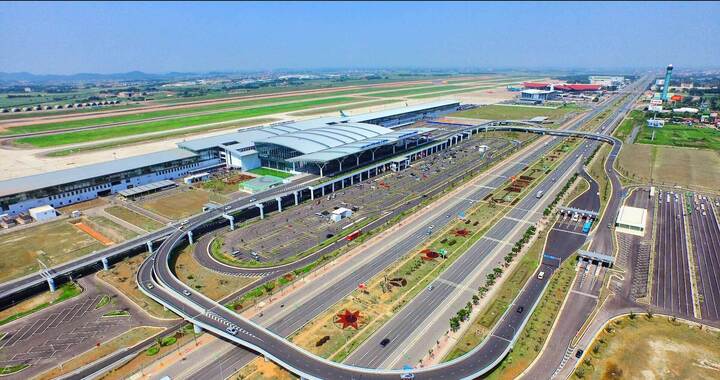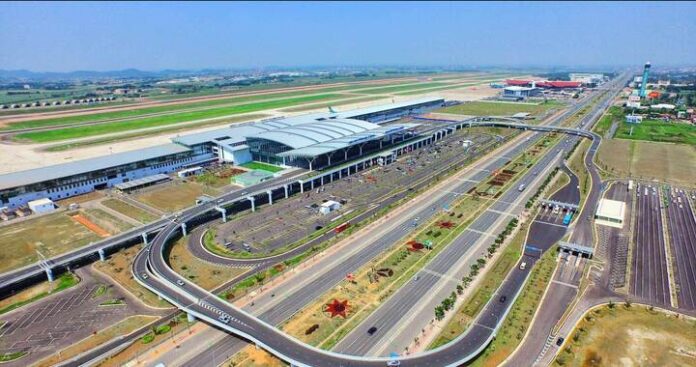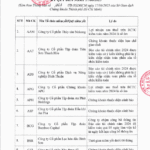The Government Office has just issued a notice announcing Deputy Prime Minister Tran Hong Ha’s conclusion at the meeting on special investment mechanisms for the construction of a road connecting Gia Binh Airport to Hanoi.
Accordingly, the People’s Committees of Hanoi and Bac Ninh provinces are assigned to proactively prepare and implement projects within their jurisdiction, ensuring the progress of project commencement and completion as directed by the Government’s Standing Committee.
“Carefully studying the current legal regulations and, if necessary, applying special mechanisms must clearly state the reasons for the proposal, assess the impact to ensure investment efficiency, and prevent corruption, vested interests, waste, and negativity,” emphasized Deputy Prime Minister Tran Hong Ha.
Additionally, the People’s Committee of Bac Ninh province is urged to proactively coordinate with the Ministry of Construction to establish investment policies for BT projects in their locality and submit them to the National Assembly if they meet the criteria for national important projects (involving the conversion of paddy land use with a scale of 500 hectares or more).
“The submission of investment policies and special mechanisms to the competent authorities, especially for this project, must adhere to the directions of the key leaders, focusing on mobilizing all resources to develop strategic infrastructure for Gia Binh Airport and its connection to the capital city of Hanoi. No additional local infrastructure or those not included in the national or national sector plans should be proposed,” the Deputy Prime Minister instructed.
“Careful consideration must be given to the investment efficiency of the project, ensuring social order and preventing the exploitation of loopholes in policies and regulations for vested interests,” Deputy Prime Minister Tran Hong Ha emphasized.

Deputy Prime Minister emphasizes the mobilization of resources for infrastructure development connecting Gia Binh Airport to Hanoi (Illustrative image)
In this announcement, the Deputy Prime Minister also decided to include Gia Binh Airport in the master plan for the development of the national airport and airfield system for the period 2021 – 2030.
Specifically, the Ministry of Construction is assigned to urgently take the lead in consolidating the proposals of localities and the opinions of relevant ministries and sectors. This includes reviewing current regulations and draft legal documents expected to be approved by the XV National Assembly at its 9th session and those prepared by the Government to take effect from July 1, 2025. Based on this review, the Ministry will propose handling measures and report to the Prime Minister before June 19, 2025.
The Ministry of Construction, in coordination with the Ministry of Public Security, shall urgently adjust and supplement the planning of Gia Binh Airport following a streamlined procedure into the master plan for the development of the national airport and airfield system for the period 2021 – 2030, with a vision towards 2050, as a basis for formulating investment policies for submission to the National Assembly.
According to the proposal of the Hanoi People’s Committee, the road connecting Gia Binh International Airport to the capital city will be approximately 35.43 km long, with its starting point at Gia Binh International Airport and ending at the intersection of the road connecting Tu Lien Bridge to Hanoi’s Ring Road 3.
The section from Gia Binh International Airport to Kenh Vang Bridge towards Hai Duong province will be implemented as a separate investment project by Bac Ninh province.
In Hanoi, the route will be 14 km long and 120 m wide. The 7 km section from the Hanoi-Bac Ninh boundary to the intersection between Ring Road 3 and the Hanoi-Lang Son highway will be newly constructed. The 7 km section from the intersection between Ring Road 3 and the Hanoi-Lang Son highway to the intersection between the road connecting Tu Lien Bridge and the Hanoi-Thai Nguyen highway (overlapping with Ring Road 3) will be upgraded from a 35 m wide cross-section to a 120 m wide one.








































